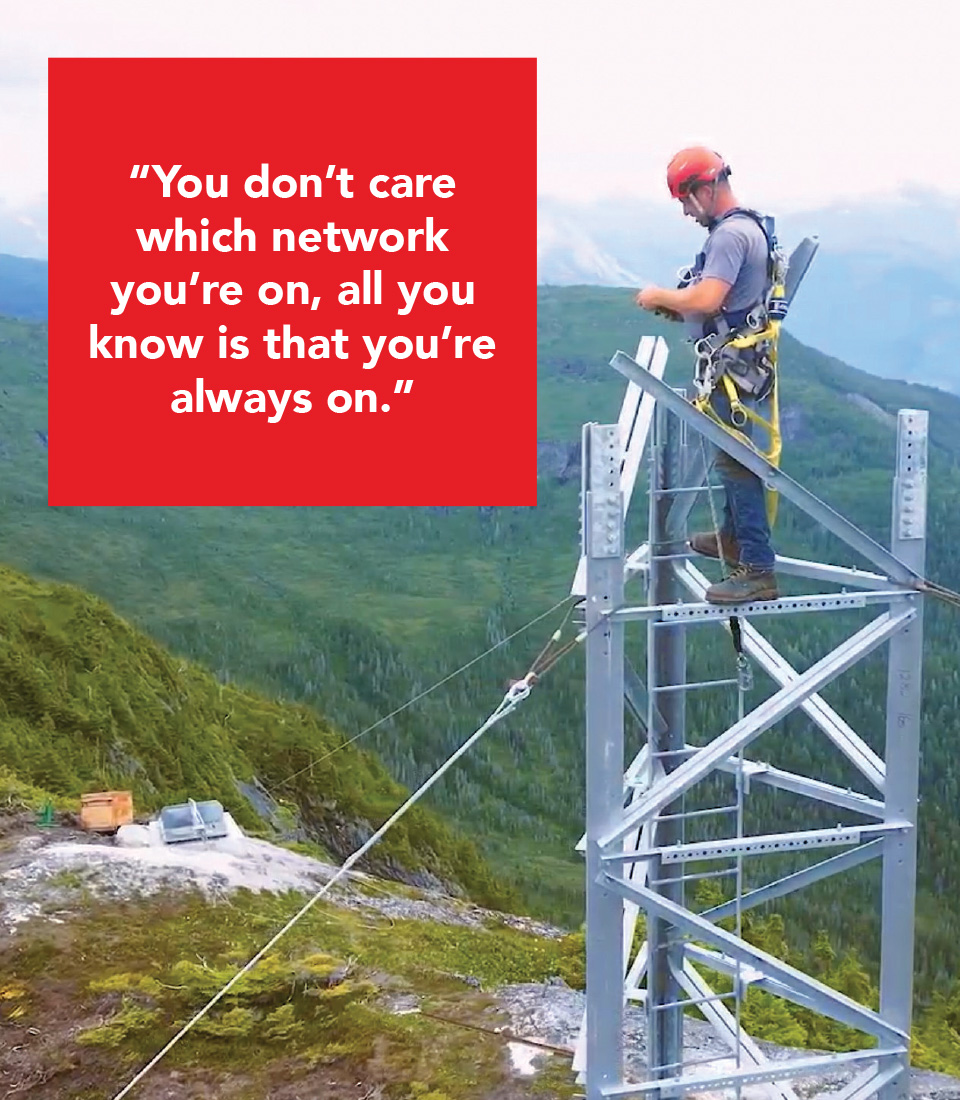
When Sara Spangelo was growing up in Manitoba, she recalls power outages, especially during the winter months, and spring floods. Workers would drive across vast stretches of the province to get to the root of the problem, often with limited network service along the way. Today, in her capacity working in partnership with Rogers Communications as a senior director of satellite engineering at SpaceX, she imagines how utilities and personnel can use Direct to Cell IoT, messaging, and future voice technologies to better monitor and respond to these emergencies.
Rogers is partnering with SpaceX and Lynx Global to bring satellite-to-mobile connectivity to Canada. The company’s national wireless network reaches nearly all Canadians with coverage, but because of the country’s size, its network covers 12 percent of Canada’s landmass. That’s a lot of territory to cover, and the company’s investment in satellite-to-mobile technology will ensure Canadians stay connected in areas beyond the limits of traditional wireless networks.
Satellite-to-mobile operates similarly to cellphone towers by allowing standard mobile phones to maintain a connection to wireless networks through satellites in low orbit around Earth. What that means is anyone with a smartphone can call, text, or access data anywhere they are.
Spangelo stresses the technology’s human aspect too.
“It’s about peace of mind,” she says. “Whether you are in the middle of a Great Lake, hiking on a mountain, or just in a super remote place between the cities, you’ll be able to connect.”
For Tony Staffieri, president and CEO of Rogers, bringing satellite-to-mobile connectivity to the most remote parts of Canada is part of how Rogers is shaping the future.
“Innovation has always been a part of our DNA,” says Staffieri. “We are always thinking about ‘what’s next, what is it that the customer is likely looking for, and how do we bring the best technology and innovation to Canada and to Canadians?”
“Whether you are in the middle of a Great Lake, hiking on a mountain, or just in a super remote place between the cities, you’ll be able to connect.”
Despite the presence of cellphone towers in areas of large population density near cities and towns, it can be a challenge to reach all rural and Indigenous communities, natural resource operations, and first responders coordinating to control wildfires or other remote emergencies.
That’s why the primary benefit of satellite-to-mobile technology is significant. Through this expanded service, everyday Canadians on road trips or outdoor adventures will be able to remain a text or call away from loved ones and enterprises will be able to monitor the conditions of faraway equipment with internet-of-things sensors.
“Our vision is that we will have 100 percent coverage below and above ground, as well as cover all parts of Canada, including its remote corners,” says Staffieri.
The investments Rogers is making in satellite-to-mobile technology also have an application for public safety and first responders.
When cell towers burn down, or affected communities are in remote areas where there’s limited cellular service, it can be difficult for first responders to contact each other, find people who need help, or send out messages that a situation is developing or getting worse.

“This new satellite technology will be phenomenal for search and rescue, we’ll be able to do more rescuing and less searching,” says Mabel Tilly, provincial training coordinator for the Newfoundland and Labrador Search and Rescue Association who participated in Rogers’ historic satellite-to-mobile test call with Andrew Furey, premier of Newfoundland and Labrador, in December 2023, with Lynk Global.
“Having the ability to pinpoint someone by GPS signal from the cellphone in their pocket, speak to them, and find out exactly why they are in distress will drastically improve our response time and ability to get people out alive. Along with being able to find people easier and bring them back quicker, we’ll also be able to bring in the proper equipment to help them right away, like first aid or appropriate means of transportation,” added Tilly.
And because first responders don’t just need to be connected during wildfire emergencies, but also need to have preventive systems in place, Rogers is also partnering with SenseNet, a global leader in early wildfire detection technology, to bring the Vancouver-based company’s AI technology to communities across the country.
Rogers also partners with the University of British Columbia and BC Wildfire Service to test wildfire indicators using 5G sensors. They’ve also deployed 5G-powered Pano AI cameras on wireless towers in Kelowna and Prince George that can detect smoke up to a twenty-kilometre range.
For Rogers, these investments are part of an overall mission to create a reliable, seamless experience, going from wireless to wireline and soon satellite, no matter where you are or what you need it for.
“What consumers and businesses really want is reliability. That’s been our focus and where we’ve been putting a lot of emphasis,” says Staffieri. The intended outcome, he says, for customers is straightforward: “You don’t care which network you’re on, all you know is that you’re always on.”
This means even smarter, more sophisticated networks.
Network slicing is one way. It’s essentially a 5G network technology that adjusts how networks operate by moving from one single “lane” to multiple lanes for wireless traffic, depending on needs. “Today, all wireless traffic just happens,” says Staffieri. “Network slicing is a technology for the wireless part of our business that allows us to create dedicated lanes.”
Those lanes can be customized for different attributes, such as low latency, high-precision location, or higher speed demands. One notable case Staffieri points to is first responders. “For them, it’s important that they’re always on and that they don’t run into network congestion, particularly in the case of a natural disaster when everyone is trying to connect either to seek assistance or to contact family or friends. We need to make sure first responders have priority access with a dedicated lane for them,” says Staffieri.
Similarly, a low-latency lane could be provided to hospitals and clinics performing robotic surgery, or at a concert—the venue could be given one low-latency network lane to live stream the show and a separate high-capacity lane for fans to share their experiences on social media.
Collectively, these efforts are in pursuit of a singular goal. “Our vision is that in ten years every corner of our country is connected,” says Staffieri. “It doesn’t matter where it is, doesn’t matter how far north it is, doesn’t matter if it’s underground, above ground. It’s all connected.”
VISIT WWW.ROGERS.COM FOR MORE INFORMATION







